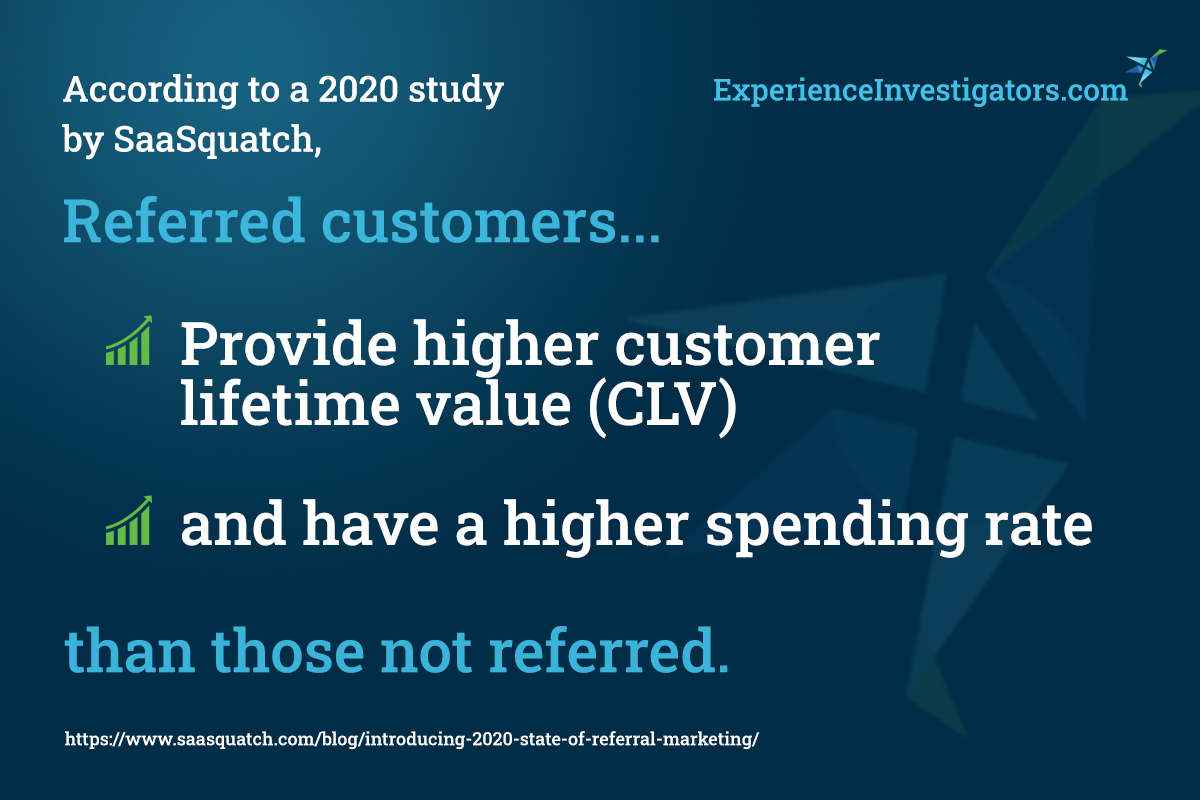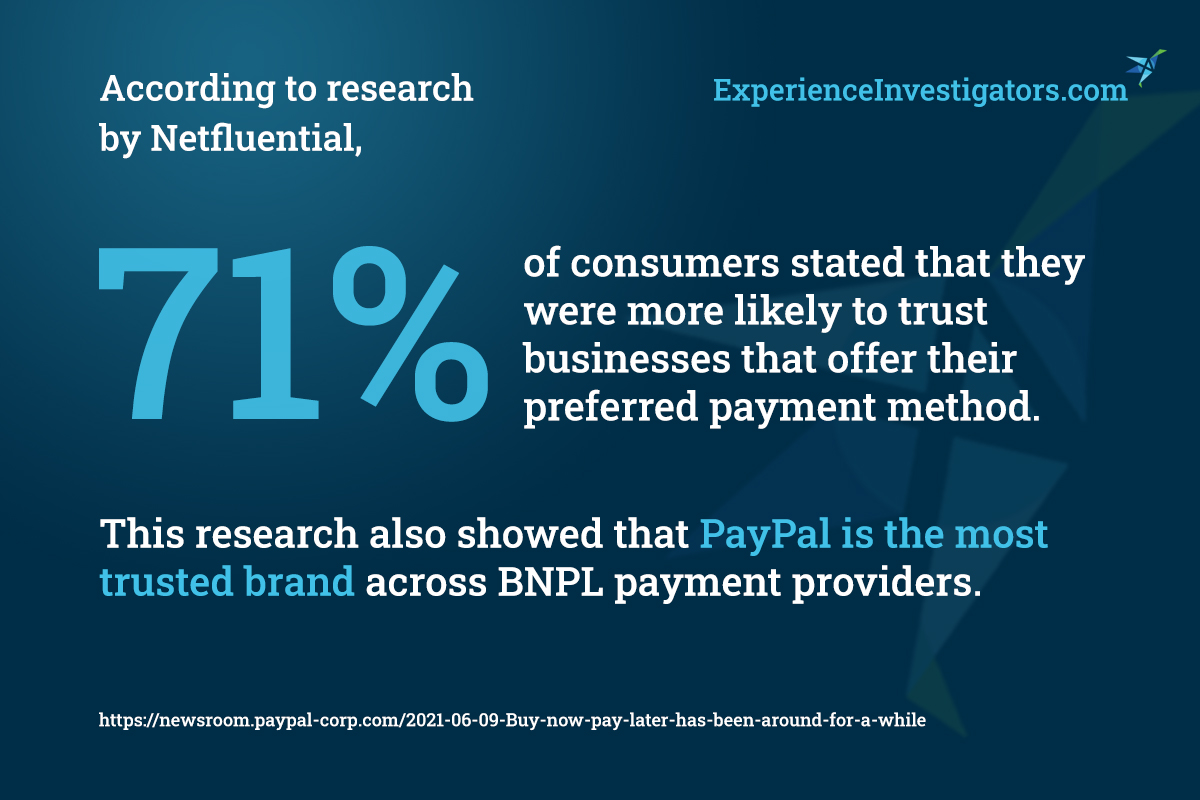This article is sponsored by PayPal.
verb: fail to care for properly.
noun: the state or fact of being uncared for.
from Oxford Languages
Neglect can feel like a harsh word. It’s easy to think that if we’re neglectful toward our customers, it must be through some negative action.
But the most common type of customer neglect we see is simply the lack of attention paid to putting the customer first.
Your customers are interacting with your organization, calling service numbers, navigating mobile apps, and waiting for products. They are doing this whether or not you are focused on delivering a great experience.
The brands that do pay attention to the details of the experience they deliver are the ones who disrupt markets, gain more customers through referrals and word-of-mouth marketing, and keep their customers happier, for longer.
A great customer experience is something customers tell their friends about – leading to referred customers. According to a 2020 study by SaaSquatch , referred customers provide a higher lifetime value than those not referred, and have a higher spending rate than those not referred.
That’s why paying attention to the details of the experience can help brands disrupt markets, gain more customers through referrals and word-of-mouth marketing, and keep their customers happier, for longer. Many large companies have disrupted entire industries based on experience improvements, not products.
While it’s easy to think customer experience strategy is just about simply being kind or exceeding expectations, it’s of course about so much more than that.
Customer experience is about understanding your customer’s needs and expectations, then ensuring that their entire journey is full of ways that show you know them, care about them, and set up to earn their trust.

Your customer has expectations from your brand throughout their journey. There are moments along the way you may be overlooking because that’s how it has always been done, or because it’s simply not a big moment.
Consider what it takes to build trust throughout the journey. A study by BI Intelligence showed how it takes 12 (twelve!) positive experiences to overcome one negative one.
That means that every overlooked moment — those moments that leave the customer feeling a bit neglected instead of cared for, or those moments when they need information or support and can’t find it — matters. These are opportunities to deliver a positive experience and build that trust with the customer.
Then, when things go awry, which unfortunately could happen in any customer journey, there is more of a chance to overcome that one negative experience and keep a customer happy.

Knowing the moments to look for is half the battle. Let’s dive into the five overlooked moments in your customer’s journey.
Customers start their journey as potential shoppers. At the beginning, they may not necessarily even be shopping for what your brand provides.
Take a look at the many ways these potential customers might first become aware of your brand. These first impressions make a difference, and may even determine if they choose continue their journey with your brand.
The awareness phase is one of those moments to build trust or neglect it.
If you’re not sure of the path a potential customer takes during this part of their journey, leverage micromapping to help define and discover the specific steps they take, what they experience with your brand, and how to address it.
It’s easy to think that when a customer is exploring a product page on a web site that they are asking obvious questions like “what size will fit?” or “how much does this cost?”
But customers and potential customers are also wondering about the next few steps of the journey.
They might be wondering how the material feels, or if that product is compatible with their other devices. They are also looking for clues about payment options, delivery dates, and product return possibilities.
Customers today are looking for options. Consider how to inform customers BEFORE they contemplate the options available. For example, a customer might be concerned about when a product will arrive, or what payment options will meet their needs.
These subtle but important mentions can reassure and encourage a customer to continue their journey, confident they are able to make choices that best suit them.
Customers will need some help along the way. This is especially important with technology products, Do-It-Yourself solutions, and anything else that could be new to the customer.
It’s smart to align your customer’s journey with your education strategy. It’s even better if your brand can proactively guide a customer before they have to search for information and support.
A pet care brand did this extraordinarily well when I was researching what I’d need to bring home a puppy. (Quite literally asking myself, what on earth do I need!?)
Through the digital journey, I was given proactive tips about training and care, along with helpful items suggested for the shopping cart. I felt informed and confident by the time I was checking out.
Proactively supporting your customer’s goals (like caring for a puppy) versus selling items fulfills a need your customer has AND drives sales of those very products.
Work with your content strategy to align with your customer’s overall experience, not just the specific touchpoint or transaction.
It’s a little ironic to point this out, since the purchase is when a customer technically becomes a customer. But some customer journeys are full of personalized, helpful experiences during the pre-purchase phase and then feel very transactional at the point of purchase.

Purchase is more than just a transaction. This is a chance to build the relationship further.
Recognize what your customer wants at the moment of purchase:
This leads to our final overlooked moment!
None of us are in business without customers. Yet we sometimes move beyond the purchase – that moment they become a customer – and do very little to help them celebrate the moment.
It’s a big decision to buy a couch or a car. Don’t move past that without celebrating to make it a personalized, memorable experience for the customer.
That’s what these moments can lead to – a long-term relationship instead of a transactional moment in time.
Take a look at your entire customer journey. Look for these specific moments and ask: How many of these has our organization been overlooking?
Whatever the number, don’t feel bad — these are common because many organizations struggle with them. But your brand can take proactive steps to make these moments better.
Remember, customer experience happens whether you’re intentional about it or not — so try out some of the recommendations I mentioned, whether that’s educating your customers, offering more ways to pay, or celebrating with them, and start proactively improving your customers’ experience.
Looking to step up your game further? These links can help:
 Jeannie is an award-winning customer experience expert, international keynote speaker, and sought-after business coach who is trailblazing the movement from “Reactive Customer Service” to “Proactive Customer and Employee Experience.” More than 500,000 people have learned from her CX courses on LinkedIn Learning, and her insights have been featured in Forbes, The Chicago Tribune, The Wall Street Journal and NPR.
Get Jeannie’s insights in your inbox each week by subscribing to The Weekly Win and follow her on LinkedIn, Instagram and YouTube.
Jeannie is an award-winning customer experience expert, international keynote speaker, and sought-after business coach who is trailblazing the movement from “Reactive Customer Service” to “Proactive Customer and Employee Experience.” More than 500,000 people have learned from her CX courses on LinkedIn Learning, and her insights have been featured in Forbes, The Chicago Tribune, The Wall Street Journal and NPR.
Get Jeannie’s insights in your inbox each week by subscribing to The Weekly Win and follow her on LinkedIn, Instagram and YouTube.